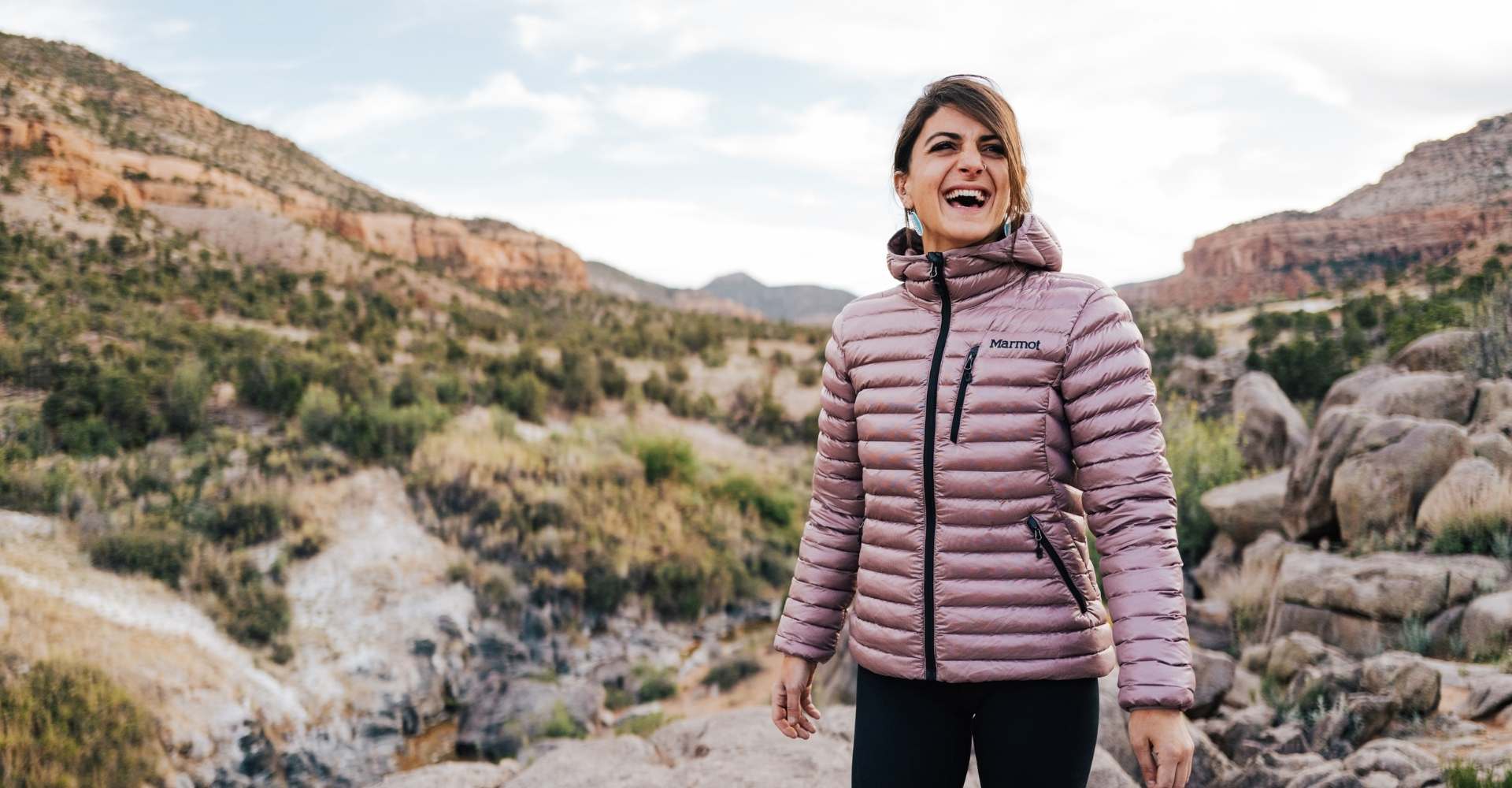Down vs. Synthetic Insulation
Posted by Alpinistas on Oct 25, 2021
The Lowdown on Down
Are you looking for the ultimate warmth for cold weather activities? Want to take a trip to the grocery store feeling like you are still wrapped in your favorite comforter? You are going to be looking for an insulated jacket. As with everything in modern outdoor clothing you have plenty of style options from plenty of companies; but as far as what these jackets are filled with there are really only two choices. Down or synthetic. Now if you stumbled across this article hoping to find information on a sleeping bag you are in luck because the fillings and properties we will be talking about for jackets are the same as sleeping bags. Sit back and enjoy.
Down
There’s a saying from Thomas Edison “-That you can’t improve on nature”. While Edison was talking about healthcare, it can be applied here for down too. Down isn’t technically feathers as you would think from a craft store. Down is a type of plumage that comes from the bellies and underwings of waterfowl like geese and ducks. Down is extremely lightweight, soft, and compressible. Down works by trapping air between its filaments or fibers. Down is measured by its “fill-power” and works like this: a 700-fill-power means that 1 ounce of down will fill 700 cubic inches. Why do we care about how much space 1 ounce of down will fill? If our jacket or sleeping bag is rated to 20degrees a 700-fill-power will be heavier than a 900-fill-power version since it will take more down to get the same rating. Higher fill-power, lower weight. Keep in mind the higher the fill-power the higher the price tag. Down is highly compressible and as such has a long lifespan. This long life and great compressibility makes it a winner for sleeping bags.
For all its positive attributes there are a few negatives to down as an insulator.
Down doesn’t do well in wet conditions. A heavy rain or extremely humid conditions will cause the down to collapse and lose a majority of if insulative value. A good waterproofing beforehand will hopefully save you from a prolonged drying out period later. Some people are allergic to down. While rare; if you have had problems in the past with pillows or comforters it would be wise to see an allergy specialist before purchasing a down jacket. Good quality down products tend to be more expensive than the competition, budget minded shoppers may want to look at synthetics instead. Down is an animal product, it’s harvested more like wool than anything but if you would like to live animal product free this is not your first choice. Good news is that companies are listening to our concerns and companies like Rab, Marmot and many others use the Responsible Down Standard or RDS and other animal welfare programs to support transparent and responsible sourcing of down.
Synthetic
Synthetic insulation is science's answer to down. Synthetic insulation is typically polyester that is quick-drying and maintains most of its insulative properties when wet. Synthetics also have a budget-friendly price point while maintaining very good insulation. In the case of Marmot’s “Featherless” line, the products are made with 3M thinsulate that traps air in the same manner as down but will keep shape and warmth even when wet. Synthetics are also easier to dry than down, both in time and technique. Unlike down’s fill-power, synthetics are measured in grams per square meter, often displayed as just grams. An easy way to understand the weight to warmth ratio is the higher the grams the heavier and also warmer. A 60g jacket will be a performance weight fall/spring jacket while a 200g jacket will be a parka. Budget friendly and great for rainy snowy places, why would I buy anything else? Well internet buddy there are a few downsides of synthetic insulation. Synthetics are still heavier and bulkier than down for the same level of insulation. If you are looking to shave ounces and trim inches in your pack a synthetic won’t be a first choice. If you are a hard-core adventurer synthetic insulation breaks down faster than goose down. At some point from folding, stuffing, and using your gear you will develop cold spots where the insulation has compacted and settled.
Down/Synthetic Blends (Hybrid)
Surely there must be a middle ground! Something between the incredible warmth to weight ratio of down and the water-resistant qualities of synthetics? Funny you should ask. There is a hybrid of these two known as…Hybrid or down/synthetic blends. Hybrids take the best of both worlds and put them in one jacket. You will have a lighter more insulative jacket from the down, with a better water resistance from rain and snow with a lower price point than a tradition down jacket. If you were planning on a cold snowy trek, especially one that would take you away from a dryer, the hybrid/ blend jackets shine.
I’m sure we could go even deeper into proprietary insulation, but this article was intended to give you a good foundation for understanding types of insulation in jackets or sleeping bags. While price, weight, and fill-power all matter when you are out on the trail the most important thing is you being out there. Find a jacket and have an adventure. If you’ve found a sleeping bag instead well have a good sleep.
Stay warm and I’ll see you in the field.
